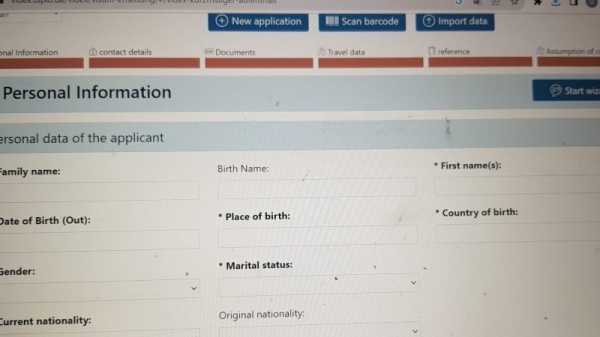
People applying for visas to visit Europe’s Schengen area will soon do so via an online platform, under a change adopted by EU foreign ministers on Monday (13 November).
The shift towards digitalisation of the visa process will also do away with the need for applicants to get a sticker in their passport, meaning no more appointments at consulates or service providers’ offices.
The change, unveiled after a long legislative process, will take effect after technical work on the visa platform, expected to take months, then publication in the EU’s administrative gazette.
The Schengen area comprises 23 of the 27 EU member countries plus associated neighbours Switzerland, Norway, Iceland and Liechtenstein.
The online visa system “will simplify the application process for travellers,” said Spain’s Interior Minister Fernando Grande-Marlaska, whose country currently holds the EU presidency.
Once it is in place, people applying for short stays in the Schengen area will upload documents, data and electronic copies of their travel documents with biometric information, and pay fees, all through an online platform.
If approved after database cross-checks, they will receive a cryptographically signed barcode to print off or store in a device.
But some first-time applicants or those with a new passport or changed biometric data may still need to attend an in-person appointment.
Some countries, such as Australia, already have similar systems in place, where the online visa is linked to a person’s passport without the need for a sticker in it.
In most cases, citizens from more than 60 countries around the world, including Australia, Britain, Canada, New Zealand and the United States, do not need to apply for Schengen visas for short visits.
But they will still be required to apply online for pre-screened entry under a much-delayed European Travel Information and Authorisation System (ETIAS), similar to the ESTA system employed by the United States. ETIAS is now expected to be up and running in mid-2025.
All visitors entering the European Union — with visas or visa waivers — will find themselves going through an automated EU Entry/Exit System (EES), whose implementation has also been much delayed but expected to be in place at the end of 2024.
The computerised EES will record a person’s details and biometric data along with their date of entry and exit, keeping track of overstays and refused entries.
Read more with EURACTIV

Greece pressures Albania to show ‘way out’ of bilateral crisisGreece is blocking a letter from the 27 member states to the EU Commission on opening up the first five chapters of the accession process, a source confirmed to Euractiv.
Source: euractiv.com



